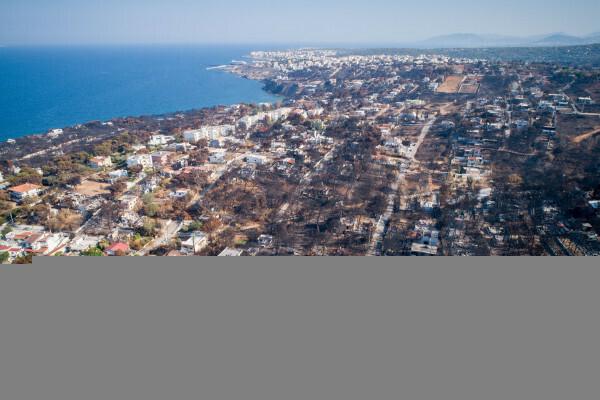The geography of Brazil comprises aspects such as area, climate, hydrography, relief, vegetation, among others.
Located in South America, its extension is more than 8.5 million square kilometers in length (8,515,759.090 km).2) which makes it the fifth largest country in the world.
It is also one of the most populous countries. Despite having 204,450,649 inhabitants, it is classified as sparsely populated due to the fact that it has 22.4 inhabitants/km2.
The country is divided into five regions (Northeast, North, Midwest, Southeast and South) and has 26 states and a Federal District.
It borders Venezuela, Guyana, Suriname, French Guiana, Colombia, Peru, Bolivia, Paraguay, Argentina and Uruguay. This means that it borders almost every country on this American subcontinent, except Chile and Ecuador.
The Brazilian relief is mainly formed by plateaus and depressions. Brazil is bathed by the Atlantic Ocean and has the largest hydrographic basins in the world.
Read:
- Brazilian Regions
- Brazil states
- Capitals of Brazil
Brazilian population
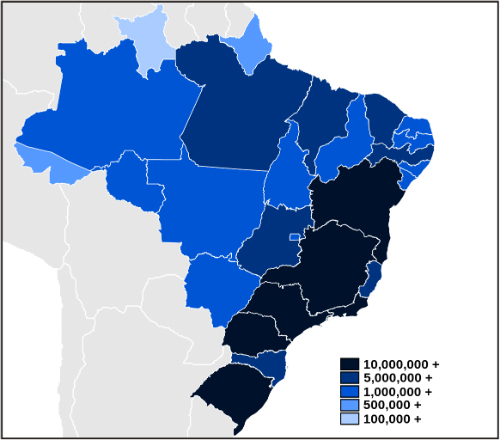 Brazilian Demographic Map
Brazilian Demographic Map
the life expectancy of the Brazilian population is 73 years old.
São Paulo is the most populous state in Brazil with 41.2 million inhabitants. After him, Minas Gerais, with 19.5 million inhabitants.
These data show that the Brazilian region with the highest population concentration is the Southeast.
Meanwhile, the Brazilian state with the smallest population is Roraima, with 451.2 thousand inhabitants.
Also read about the borders of Brazil.
Brazilian relief
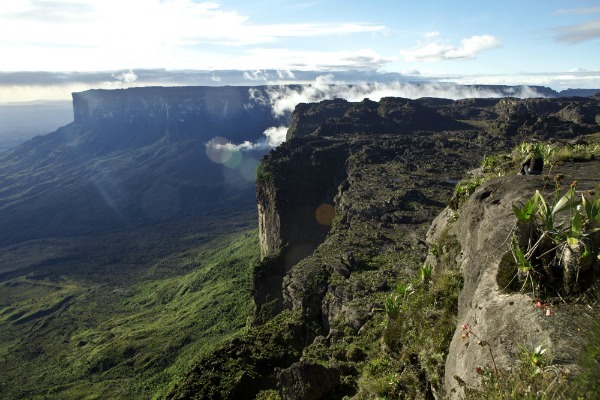 Monte Roraima, example of a plateau in Brazil
Monte Roraima, example of a plateau in Brazil
You plateaus, high and flat areas, occupy most of our territory, about 5,000.00 km2. They are divided into:
- Guyana Plateau
- Brazilian Plateau
- Central Plateau
- Southern Plateau
- Northeast Plateau
- East and Southeast Mountains and Plateaus,
- Plateau of Maranhão-Piauí
- Dissected Southeast Plateau (South-Riograndense Shield)
Along with the depressions, lower areas, the plateaus occupy about 95% of the national territory. The main depressions in our country are the North and South Amazon depressions.
The main plains of Brazil, which are characterized by flat areas with almost no variation in altitude are: Amazon Plain, Pantanal Plain and Coastal Plain.
read about Brazilian relief and Brazilian territory.
Brazilian Hydrography
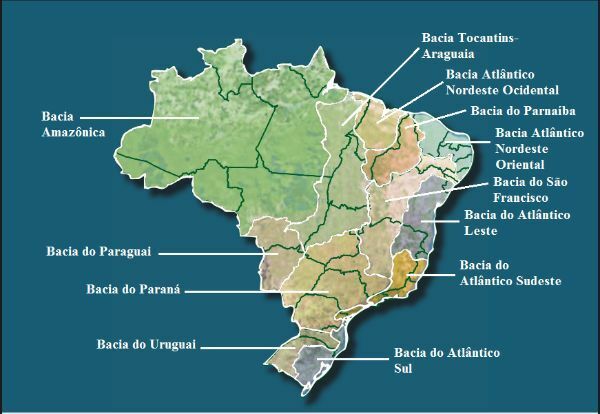 Brazil hydrography map
Brazil hydrography map
Altogether, Brazil has 12 hydrographic regions, including the Amazon basin, the largest of them all. Are they:
- Amazon Hydrographic Region
- Tocantins Araguaia Hydrographic Region
- Paraná Hydrographic Region
- São Francisco Hydrographic Region
- Hydrographic Region of Paraguay
- Uruguay's Hydrographic Region
- Western Northeast Atlantic Hydrographic Region
- East Northeast Atlantic Hydrographic Region
- Parnaíba Hydrographic Region
- East Atlantic Hydrographic Region
- Southeast Atlantic Hydrographic Region
- South Atlantic Hydrographic Region
read Hydrography of Brazil.
Brazilian climate
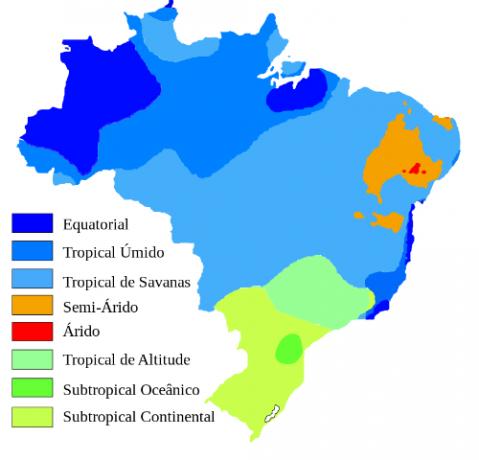
Map of climates in Brazil
In most of the country the climate is hot, which is due to its location between the Equator and the Tropic of Capricorn.
Despite this there are 6 main types of climates in Brazil: Equatorial, Tropical, Semi-Arid Tropical, Altitude Tropical, Coastal Tropical and Subtropical.
Brazilian Vegetation
 Brazil Biomes Map
Brazil Biomes Map
In our country is located the largest tropical forest in the world. Part of the Amazon Forest, the “Lung of the World”, is also found in 8 other countries in South America.
THE brazilian vegetation consists mainly of:
- Caatinga
- thick
- Mangrove
- pampa
- wetland
- Atlantic forest
- Araucaria Forest
- Cocais Forest
- Amazon
- Brazil
Entrance Exam Exercises
1. (UNISA) The official declarations of the different governments of Brazil regarding the need to populate the territory Brazilian, the concessions of Brazilian labor legislation, such as family allowance, maternity allowance etc. lead to the conclusion that Brazil adopts a demographic policy:
a) natalist or populationist
b) contrary to vegetative growth
c) contrary to Malthus' theory
d) Neomalthusian
e) antinatalist
Alternative to: natalist or populationist
2. (UFRJ) The Brazilian hydrographic basin with the greatest possibility of navigation is:
a) Paraíba do Sul Basin
b) Uruguay Basin
c) São Francisco Basin
d) Paraná Basin
e) Amazon Basin
Alternative e: Amazon Basin
3. (Mackenzie) In the austral winter, air masses from anticyclone areas located in the South Atlantic and Argentina dominate, which invade the Brazilian Plateau and imply the formation:
a) Northwest winds
b) of the land
c) the counter-trade winds in the Northeast
d) of the breezes
e) Southeast trade winds
Alternative e: Southeast trade winds
4. (FAAP) Some Brazilian regions have a high percentage of active population linked to the primary sector. Related activities are:
a) the oil industry and agriculture
b) the automobile and extractive industries
c) to trade and agriculture
d) the textile and food industry
e) agriculture and mineral extraction
Alternative to: the oil industry and agriculture
Test your knowledge with a general knowledge quiz.

